Sweat vs stress: How your stress levels could be hindering your workout progress
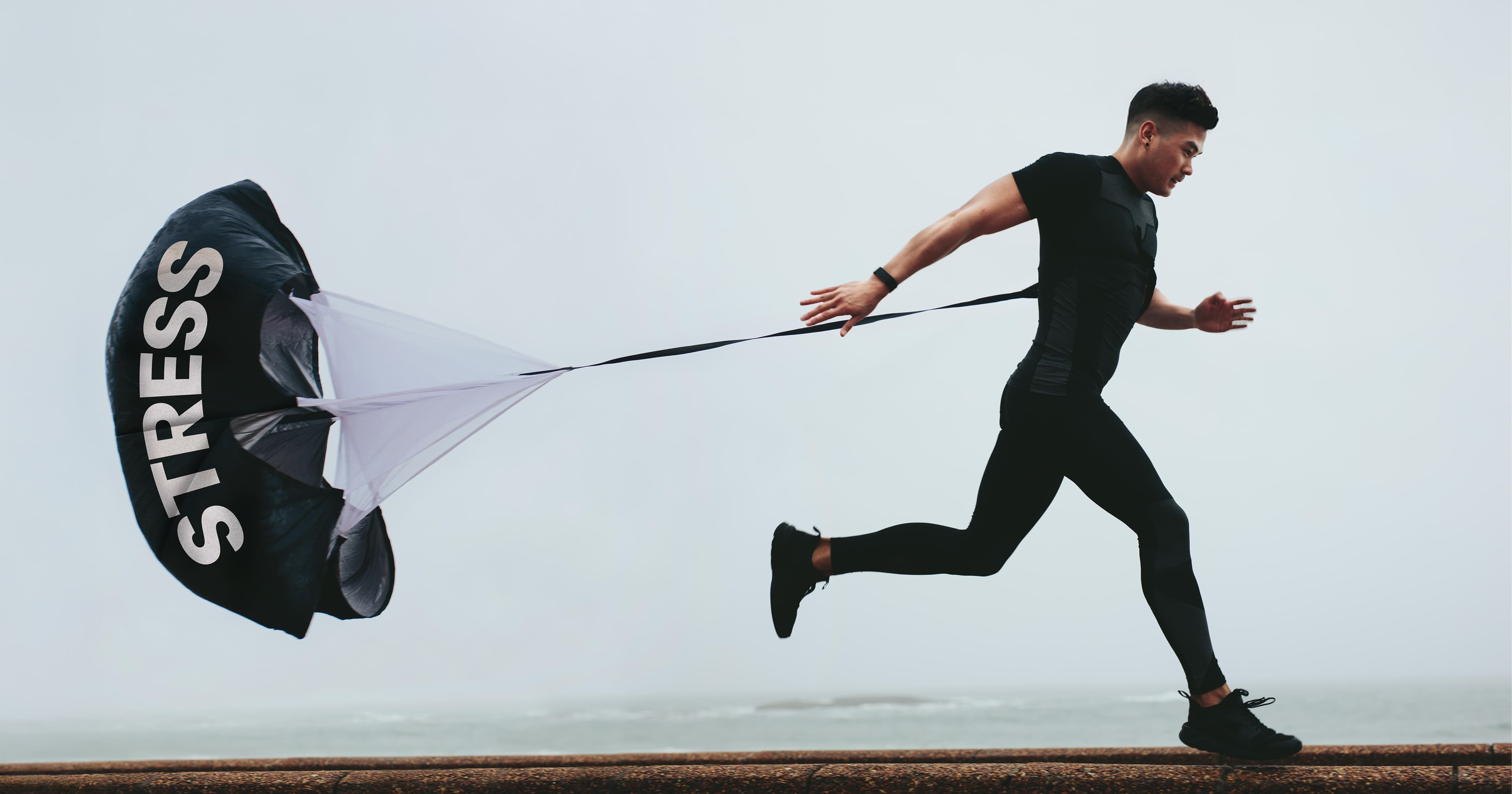
Over 12 million people in the UK exercise regularly, and for good reason. An active lifestyle supports both mental and physical well-being. When done right, it acts as a pressure valve for stress, releasing endorphins, lowering baseline cortisol levels and improving sleep. It also brings structure and a sense of control, two things that often feel out of reach when stress becomes overwhelming.
But what happens when, despite consistent effort, people aren’t seeing or feeling progress? Well, for many, it’s not due to a lack of trying. They’re following the recommended routines and diets, yet still hitting a wall. The culprit might be a silent saboteur: stress.
While exercise is widely known to help manage stress and boost mood, consistently elevated stress levels can feel as though they’re reversing those benefits if your workout routine isn’t adjusted to match how you’re feeling. Though it might not be the only problem, this mismatch offers an explanation towards why so many people are no longer experiencing the positive effects of working out, and not realising why.
David J. Sautter, a NASM-certified personal trainer and performance enhancement specialist, sheds light on how stress might be undermining your progress:
”Consistent, high stress elevates cortisol, one of the body’s primary fight-or-flight hormones. This disrupts sleep, hinders muscle repair, and ultimately blunts progress. Even with continuous training, high stress can lead to performance plateaus, persistent injuries, and even muscle breakdown, particularly if workouts are moderate-high intensity. you’re essentially stacking inflammation on top of inflammation, and in those moments, more training isn’t the answer, smarter training with a focus on healing your nervous system, is.”
The active population are frustrated with their workout progress
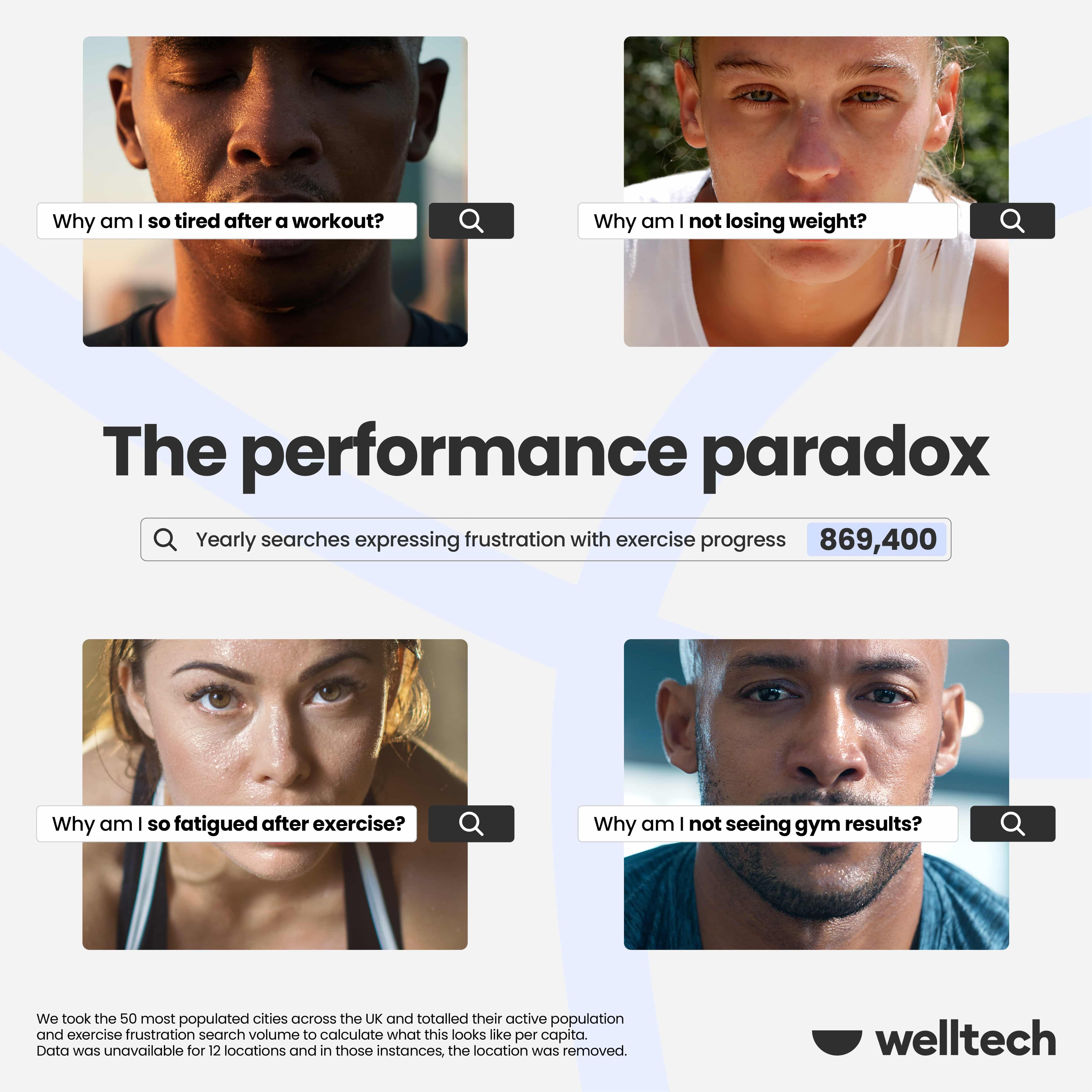
There is no denying that frustration around fitness progress is widespread across the UK. Among the active population, more than 869K online searches have been made between 2024-25 for terms like ”why am I not losing weight despite exercising and eating well?” or ”why am I so tired after working out?” These searches highlight a growing concern among active individuals who feel stuck despite doing everything ”right”.
Comparing the data1 on a city-by-city basis reveals some striking differences. Ipswich and Preston report the highest levels of workout-related frustration, where for every five people, there is a search for answers around a lack of progress, totalling 17,040 searches in Ipswich and 18,360 in Preston per year. Other cities in the top 10 include, Bolton (20,760), Luton (19,920), Gloucester (14,520), and Reading (20,520), followed by Wolverhampton (22,800), Portsmouth (21,000), Oxford (16,320), and Aberdeen (19,920).
This is a sharp contrast to other cities in the bottom of the table such as London (81,600), Cambridge (5,880), Leeds (30,000), Birmingham (39,840), and Sheffield (24,600).
So, what’s getting in the way of progress?
Experts point to one consistent factor: stress. Whilst it’s worth saying it won’t be the only influence, stress is a prevalent condition across the UK. In fact, there have been 474K searches for stress management techniques in the past year alone.
To move past this ”results plateau” David emphasises the importance of aligning your workouts with how you feel mentally and emotionally.
”Training isn’t just about muscles. It’s about your nervous system. Pushing through a high-intensity workout when you’re emotionally drained can backfire. More importantly, if you keep forcing yourself to perform workouts you don’t enjoy, then you’re setting yourself up to mentally associate exercise with feeling terrible, and you will eventually lose all motivation to work out because your body and brain connect exercise with these negative feelings.”
Introducing the sweat-stress ratio, and how it might affect you
As we've established, it’s not about how much you’re exercising, but how well your workouts align with your inner state. That’s where the sweat-stress ratio comes in. Designed to help people understand the relationship between stress and exercise, this ratio offers a simple way to evaluate whether your physical activity is in balance with your mental state, and how to make simple adjustments if it’s not.
To develop the ratio, we looked at the two key factors: stress levels and exercise frequencies. Stress was categorised as low (generally calm and relaxed), moderate (some stress, but manageable), or high (feeling overwhelmed or burnt out). Exercise was grouped similarly, by looking at how many days per week people work out: low (1-2 days), moderate (3-5 days), and high (6-7 days).
We then calculated the sweat-stress ratio by dividing exercise frequency by stress level, giving us a clear picture of whether people are sweating enough (or too much) for the stress they’re under.
To evaluate your current stress and exercise levels, give it a try below and read on to find out which of our nine profiles fits your sweat-stress ratio best:
Result
Your profile is:
The nine different workout profiles
To make our sweat-stress ratio easy to digest, we developed nine distinct profiles, grouped into three categories: high, medium, and low. Created with insights from sports medicine doctor, Tetiana Tershchenko, each profile includes expert recommendations to help you bring your stress and exercise into balance.
The high stress zone
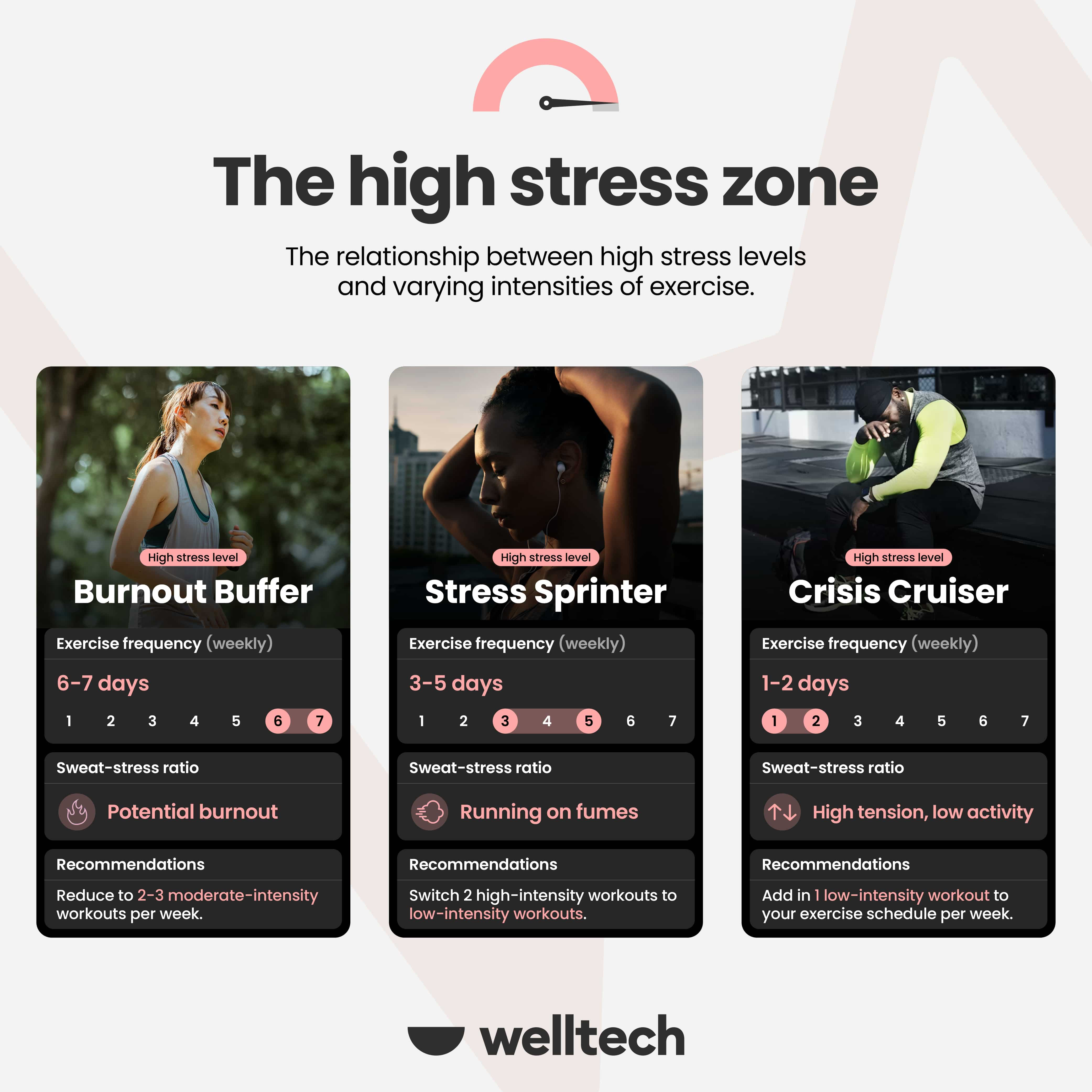
Burnout Buffer
This is the most at risk profile, marked by high stress levels and a heavy workout load of 6-7 days per week. While
dedication to exercise is admirable, this level of intensity, paired with significant stress, can elevate your stress
hormones, slow recovery, and leave you feeling depleted instead of energised.
Tetiana’s recommendation: ”In this case, it’s best to reduce the number of workouts or replace high intensity sessions for low-intensity activities, such as yoga, Pilates, or stretching.”
Stress Sprinter
As a Stress Sprinter, you’re experiencing high stress levels while exercising moderately (3-5 days per week). Your
sweat-stress ratio suggests you’re running on fumes, pushing through workouts without giving yourself enough space
to recover, which only leads to physical and mental fatigue.
Tetiana’s recommendation: ”While three workouts per week are considered optimal for stress relief, five can be exhausting if the stress levels are too high. Try replacing two of those sessions with low-intensity workouts, with the rest remaining at a moderate intensity.”
Crisis Cruiser
This profile applies to those under high stress who only exercise one to two times a week. you’re stuck in the
high stress, low activity quadrant, which means your body and mind might not be getting the movement they need to
cope effectively.
Tetiana’s recommendation: ”Although it might feel like a challenge when you’re overwhelmed, if you are consistently taking part in one or two moderate-intensity workouts per week, that should benefit cases of high stress. On top of this, I would recommend adding a low-intensity workout to your routine to help balance it out.”
The middle ground
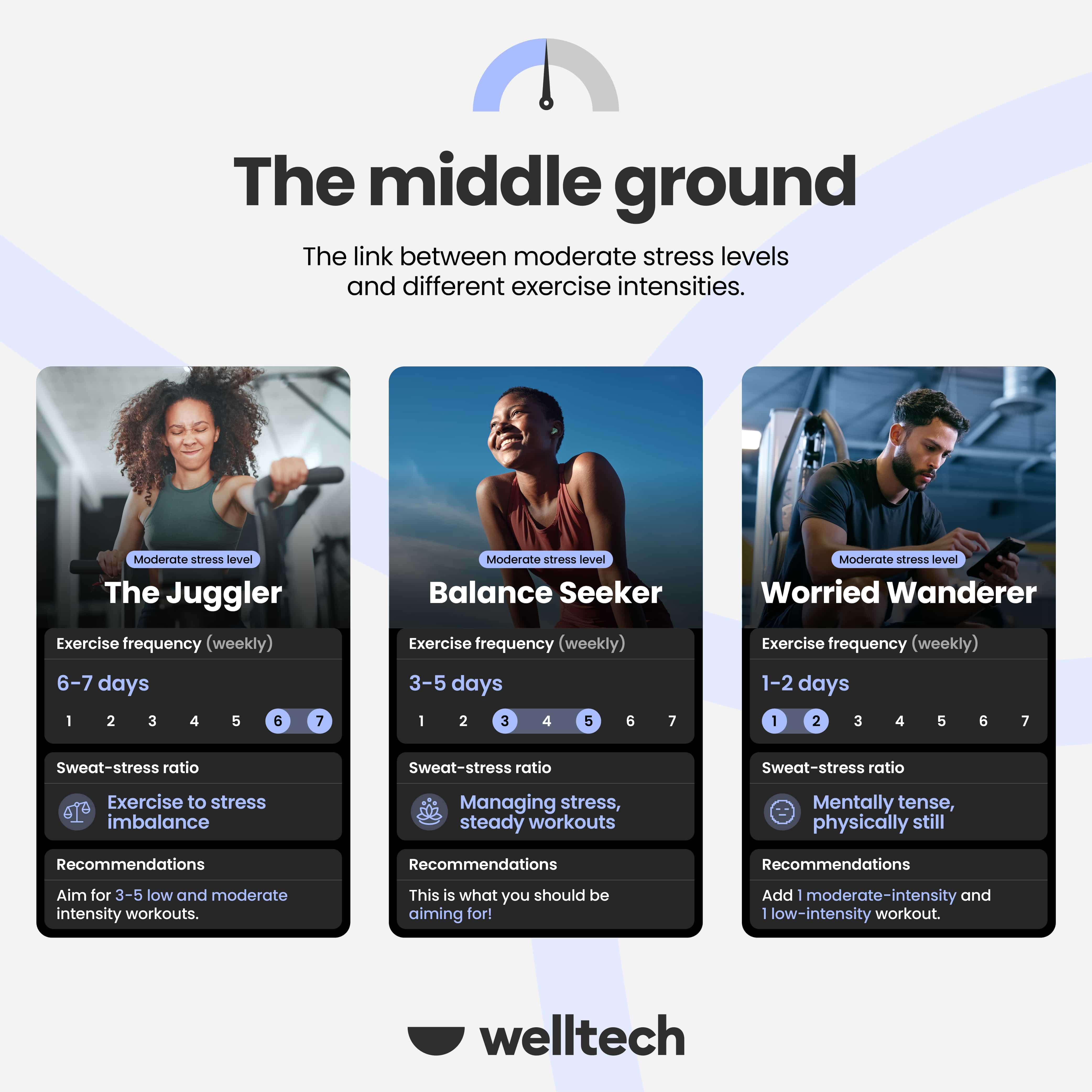
The Juggler
you’re juggling a lot, moderate stress levels and a packed workout schedule of 6-7 days per week. While you’re
clearly committed to fitness, that level of frequency might be pushing on excessive when paired with your stress
levels. Your sweat-tress ratio is showing an imbalance.
Tetiana’s recommendation: ”If you are more of a beginner, I suggest aiming for three to five low and moderate-intensity workouts per week, as opposed to six or seven sessions. This may include Nordic walking, swimming, meditation, or even dancing.”
Balance Seeker
Balance Seekers have found a strong rhythm. Maintaining moderate levels of stress with a steady workout routine of
3-5 days a week. Which, according to our sweat-stress ratio, means you’re in the healthy zone! You use exercise to
effectively manage stress without overdoing it.
Tetiana’s recommendation: ”This is what you should be aiming for, with sufficient sleep, a healthy diet, and the absence of chronic diseases, this training regime is optimal to help you manage your stress and reach your fitness goals.”
Worried Wanderer
you’re feeling the stress, but your body isn’t moving enough to help release the tension. As a Worried Wanderer,
you’re only exercising once or twice a week, meaning that while your mind stays active, your body isn’t getting
the signal to help reset and calm your nervous system.
Tetiana’s recommendation: ”In this case, it’s recommended to increase your physical activity through one moderate intensity workout and one to two low intensity-workouts per week.”
Low levels of stress
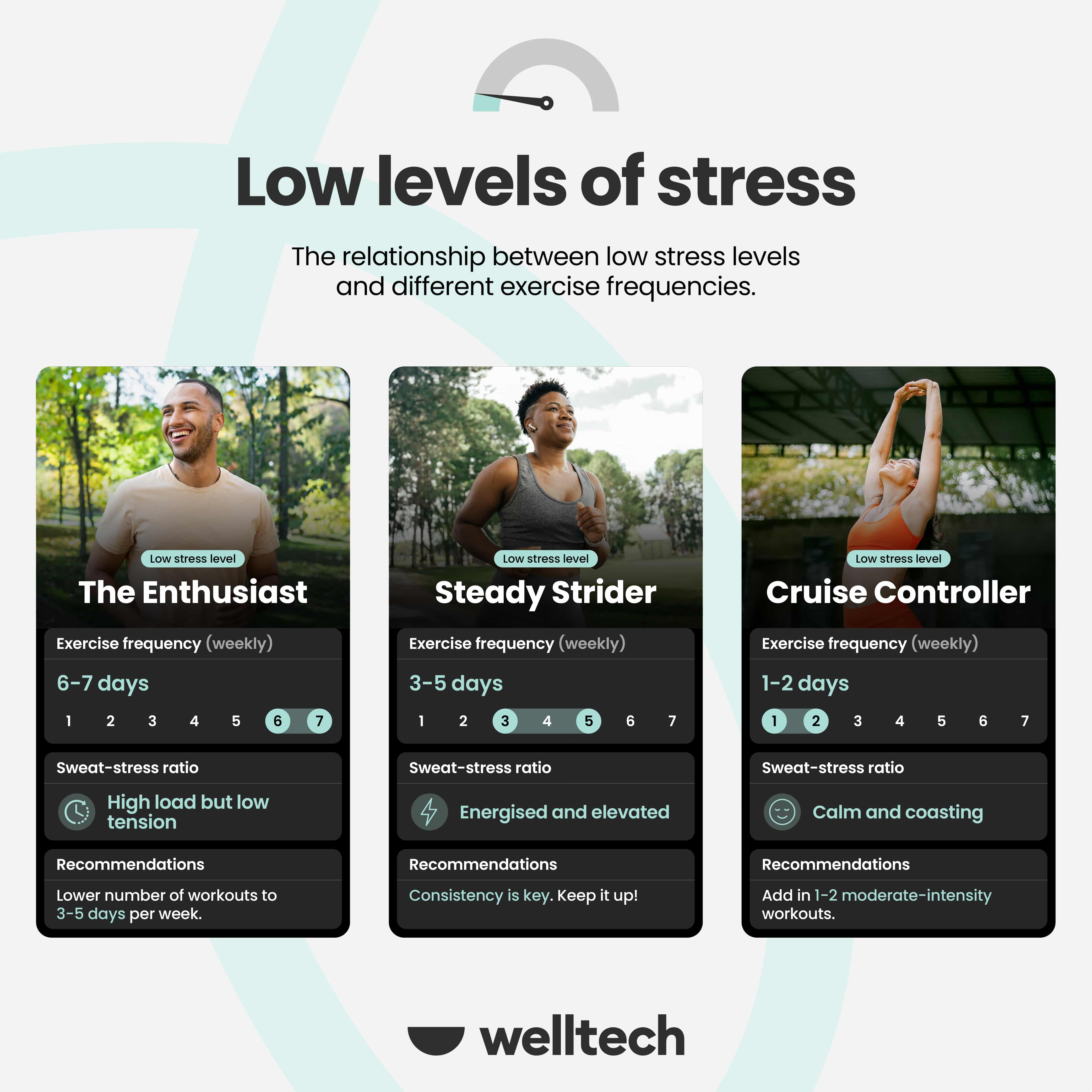
The Enthusiast
Enthusiasts exercise 6-7 days per week while managing low stress levels. Your sweat-stress ratio shows a high
physical load without the mental strain, which might seem ideal at first glance, but over time, it can lead to
fatigue or overtraining if not managed carefully.
Tetiana’s recommendation: “While this routine might be sustainable for professionals, it isn’t for most people, therefore you should consider lowering your training regime to three to five days a week to help strike a better balance and give your body ample time to recover.“
Steady Strider
You've hit the sweet spot, as a Steady Strider you’re pairing low levels of stress with consistent exercise of
three to five days per week. Your sweat-stress ratio reflects a healthy, energised state, where movement supports both your physical and mental health.
Tetiana’s recommendation: “Not much to say for this one except, keep it up! This is the optimal regime but remember consistency is key.“
Cruise Controller
Life feels calm, and your stress levels are low, but with just one or two workouts a week, your body might be
missing out on some of the energising benefits of regular movement. As a Cruise
Controller, you’re coasting smoothly, but a slight increase in activity could help elevate your overall wellbeing.
Tetiana’s recommendation: “To achieve actual results and improve your physical capabilities, it’s necessary to train at least three times a week, or two if you simply want to maintain rather than improve. With this in mind, I would recommend adding in one or two moderate-intensity workouts.“
If you want to feel progress, whatever that may look like, it’s essential to recognise the often underestimated role that stress plays. Whilst eradicating stress altogether is not a realistic or feasible recommendation, there are solutions to create balance between your mind and body. Start by adjusting your workout intensity based on your stress levels. And there’s absolutely no shame in slowing down when your body needs it.
During high stress periods, low-intensity exercise can be incredibly supportive. These types of movement help boost circulation, stimulate lymphatic drainage, and activate the parasympathetic nervous system, all essential for proper recovery. Great options include Zone 2 cardio, Tai Chi, yoga, swimming, Pilates, dance, or gentle cycling.
Timing your workouts can also make a difference. Morning or early afternoon sessions align with your body’s natural cortisol rhythm, helping with energy levels. Evening workouts, on the other hand, may interfere with your sleep and end up doing more harm than good.
One often overlooked recovery tool is breathwork. As David puts it: “Breathwork is free, fast, and incredibly effective in shifting the body out of fight-or-flight mode. Just five minutes of nasal or box breathing, (five seconds in, five second hold, five seconds out, five second hold) post-workout can accelerate recovery, improve sleep, and calm the mind.“
Remember that working out and exercise is all about healing through movement, not straining your system.
Sources
- Search data taken from Keyword Planner from May 2024 - April 2025
Methodology
We analysed the 50 most populated cities across the country, comparing each city’s active population with
annual search volume for terms related to frustration with exercise progress, in order to understand the
number of people per search. Separately, we compared UK population data with annual search volume for stress
management terms to show how search interest equates to the number of people in each area. Active population
data was unavailable for 12 cities, which were therefore excluded from the overall ranking.
We recommend reading



 Interminent Fasting Calculator
Interminent Fasting Calculator  Weight-Loss Percentage Calculator
Weight-Loss Percentage Calculator 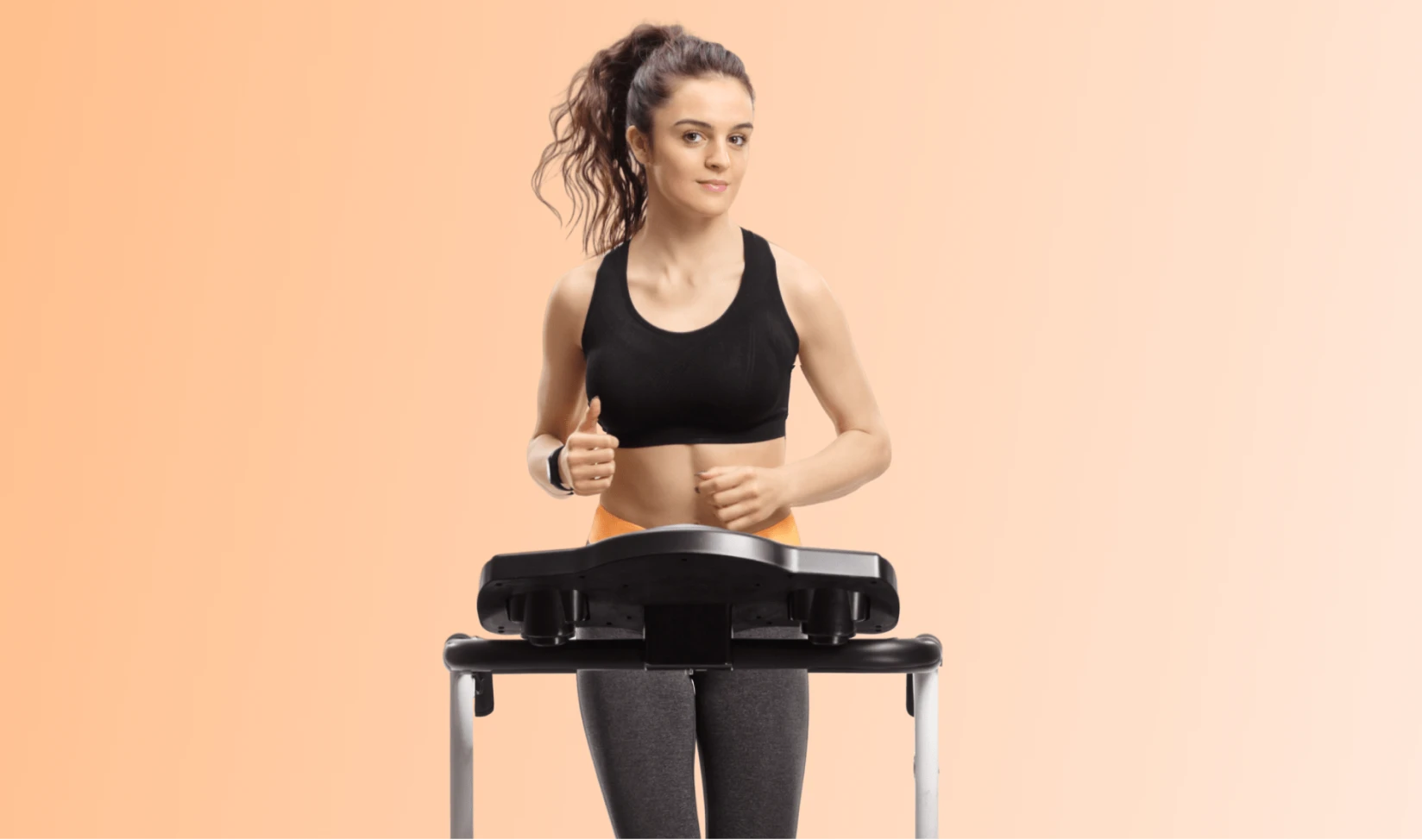 Treadmill Calories Calculator
Treadmill Calories Calculator